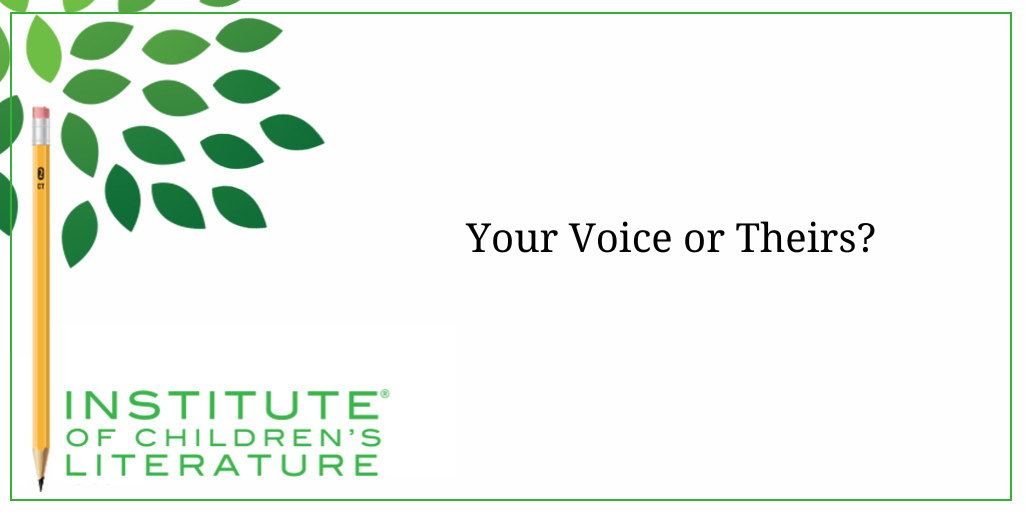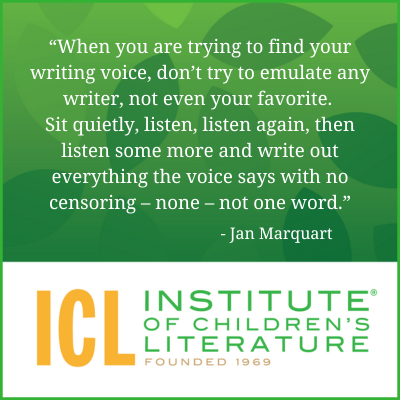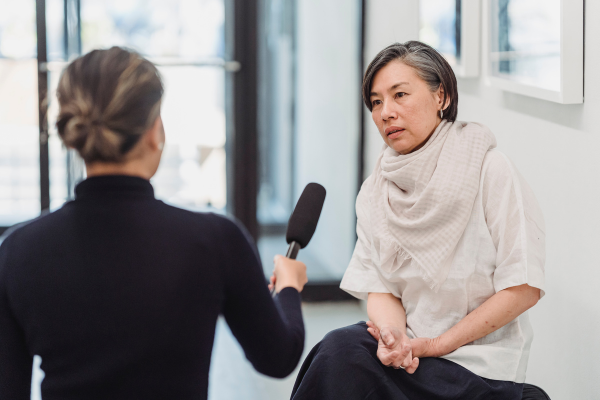
5 Ways Writers Can Prep for 2025 Goal Setting
Before we roll on to the new writing year, let’s harness our optimism for the blank slate before us and prepare for our 2025 Goal Setting just for writers.

Your writing voice consists of the word choices and sentence structures we use. It is influenced by the emotions we’re feeling, the mood we’re in, and the personality that comes out when we’re relaxed and letting it flow naturally. Friends will recognize you in your writing when it’s your authentic voice because that’s what voice is all about. It’s what is truly inside a person, coming out.
Your character voices are nothing like this. They come from themselves. They reflect the word choices and sentence structures that come from the life the character has lived and the place where they’ve lived it. The emotion, mood, and heart in their voice comes from inside them. It isn’t—nor should it be—a reflection of your voice. Not unless you’ve created a character who is basically you.

According to author Jill Hackett, “Play is an important part of finding voice because it allows us to try on new selves, like costumes.” In effect, this is what you are doing when you are creating a character. You are trying on life as that person. And that person is likely to be very different from you. In writing for children and teens, this is especially true as the characters you are writing are very different in age and experience from you.
Writing exercises designed to help you get to know your characters can be useful in capturing their voice as well. For instance, write an interview with your character where they try to convince you why they belong in your story. Maybe they’re excited and see being in a story as an adventure. Maybe they don’t really want to be in the story but they feel they must, they’re compelled. Maybe they don’t want to be in the story at all and tell you to go stuff yourself. Those three very different responses would come from three very different people. And those people would respond differently in every scene you place them. They would approach the story problem differently. They would interact with companions and villains differently. Even as I wrote those three very brief descriptions of different responses, I began to see and hear the characters. That’s what interviewing can do for you.
Keep asking your character questions:
The options are vast, but the more you know about them, the better you’ll hear their voice in your creative ear when you write that character.

By giving them their own specific, even contrasting voices, you make it easy for your readers to (1) tell the difference between the narrator voice and the character voice, and (2) tell the difference between the different characters. This will give you more freedom in dialogue as you won’t have to signpost who is speaking on every single bit of speech.
Among the writing exercises that I do frequently, one is simply to write a quick emotional picture of the character. I often do this in 60 to 75 words or less. For example, my character might be “a curious child who enjoys nothing so much as learning new facts or spouting the facts he knows. He carries a notebook around wherever he goes because he’s writing his own encyclopedia of everything. He even draws the pictures for it. Though easily distracted by new questions to ask and new experiences to study, he’s rarely bored with himself.”
As I do this exercise, I focus on an objective description. I’m not making value judgments. I’m not calling him whiny, spoiled, or annoying. Sure, the character’s friend may sometimes find him annoying but he doesn’t think that way and I’m trying to get into his head so I can write him as he sees himself. That means I need to be able to see him objectively. If I cannot, then I cannot write him believably.
Almost every story has more than one character. And that’s where our voice magic can be truly tested. You’ve made one character through your interviews and your essay, but can you make two or three or more, all who sound like individuals and not copies of one another?

With each character I add, I do another writing exercise: asking the characters how they feel about each other. For instance, I can create a teacher character and ask her how she feels about the encyclopedia writing child, she might say, “He’s very bright but keeping his mind on whatever lesson I’m presenting is like herding cats. He’ll pop up with the most unexpected questions. And they aren’t silly questions. They’re often deep, and I find myself distracted right along with him. I don’t quite know what’s going on in his head, but it must be an amazing place.”
By letting characters describe other characters, I hone the character’s voice, but I also sort out emotional notes in relationships. I learn deeper things about all the characters with these exercises. I find I’m more ready to write every scene because I know how the characters react to one another, and how they’ll react to problems that pop up. And when I write dialogue, the characters will sound different from one another almost as if by magic.
Having characters talk about one another also helps me sort our core emotions of each character. At this point in my writing career, I tend to automatically create characters who are very different. If one character is hyper and curious, then I’ll bring in a character who is staid, rule-abiding, and not terribly imaginative. These characters will tend to clash, even if they like one another. And they’ll definitely speak in very different voices. My hyper character will speak shorter sentences, but may link them all together with conjunctions so the reader gets the feeling that the character speaks in bursts of words all given in a rush. The staid character will have slower, thoughtful speech that does not run together at all. The contrast between them will add interest to every scene.
Sometimes the narrator of a story is one of the characters. In this case, all of the narrative (descriptive and action) sections of the story will be in the voice of the main character (or in the voice of a secondary character who is telling the story).

If I’m going to try to write in first person, I spend a lot of time creating that main viewpoint character. I’ll do days of writing exercises and character creation. Throughout the day, I’ll “listen” in my head for things my character would say about specific situations.
How would she respond if her dad took her to the farm supply store? Would she be thrilled by the baby chicks and the unusual smells? Or would she drag around wishing he’d told her they were stopping at the farm store so she could have made a plan to avoid it? Whether my writing exercises involve actual writing or are simply in my head, they help me to “think” in the voice of my character.
Voice, whether it is your natural writing voice or the voice of a character comes from an emotional place. It is generated by personality. It’s made up of unique word choices, sentence structures, pacing, and whatnot, but all of those come out of putting yourself in the emotional space of the character so that the voice you produce on the page is authentic and engaging. In many ways, it’s a kind of playacting. It’s a mixture of challenge and fun. But then, all the best things about writing are.
With over 100 books in publication, Jan Fields writes both chapter books for children and mystery novels for adults. She’s also known for a variety of experiences teaching writing, from one session SCBWI events to lengthier Highlights Foundation workshops to these blog posts for the Institute of Children’s Literature. As a former ICL instructor, Jan enjoys equipping writers for success in whatever way she can.

Before we roll on to the new writing year, let’s harness our optimism for the blank slate before us and prepare for our 2025 Goal Setting just for writers.

Writers can be thin-skinned when it comes to getting feedback on their work. Let’s look at 4 ways to positively deal with constructive criticism!

Rejection is part of the territory when it comes to being a writer. Today we offer reflection for writers to help redirect your efforts after a rejection.
1000 N. West Street #1200, Wilmington, DE 19801
© 2024 Direct Learning Systems, Inc. All rights reserved.

1000 N. West Street #1200, Wilmington, DE 19801
© 2025 Direct Learning Systems, Inc. All rights reserved.

1000 N. West Street #1200, Wilmington, DE 19801
©2025 Direct Learning Systems, Inc. All rights reserved. Privacy Policy.